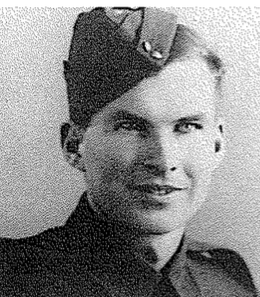Sigurdson, Kjartan
- Date of birth:
- November 6th, 1915 (Lundar/Manitoba, Canada)
- Date of death:
- June 8th, 1944 (France)
- Buried on:
- Canadian War Cemetery Beny-sur-mer
Plot: XIII. Row: F. Grave: 7. - Service number:
- H/8899
- Nationality:
- Canadian
Biography
Kjartan Sigurdson was born to Olafur and Olafia Sigurdson. Raised in a family of Icelandic heritage, he grew up speaking both English and Icelandic fluently. His early education culminated in Grade 8, and he did not pursue university studies. Before enlisting, Kjartan worked as a farmer in Lundar, where he lived with his siblings and was actively involved in mixed farming. He had 13 years of experience in agriculture and expressed a strong desire to return to farming after the war.
On March 25, 1943, Kjartan enlisted in the Canadian Army at Winnipeg, Manitoba, joining the Royal Winnipeg Rifles. He was assigned the regimental number H-8899 and held the rank of Private. His medical examination revealed him to be in excellent health, with no history of serious illness or disability. He was 5 feet 10½ inches tall, weighed 154 pounds, and had blue eyes and brown hair.
Kjartan's military service took him from training in Manitoba to deployment overseas. He embarked from Halifax on August 25, 1943, and arrived in the United Kingdom shortly thereafter. On June 6, 1944, he disembarked in France as part of the Allied invasion of Normandy. Tragically, just two days later, on June 8, 1944, Kjartan was reported missing in action. Subsequent investigations revealed that he was among a group of Canadian soldiers captured and executed by German forces near Bayeux and Caen. His remains were later discovered in a mass grave and positively identified.
Kjartan left behind a handwritten will dated September 28, 1943, in which he bequeathed his entire estate to his sister, Miss Margaret Sigurdson of Lundar, Manitoba. His estate included a partnership in a farm with his brothers and a herd of cattle. He had no spouse or children and was survived by several siblings, including Paul and Margaret Sigurdson.
Do you have more information about this person? Inform us!
- Period:
- Second World War (1939-1945)
- Period:
- Second World War (1939-1945)
- Period:
- Second World War (1939-1945)
- Period:
- Second World War (1939-1945)
Sources
- Photo 1: Operation Picture Me
- - Service record(s)








